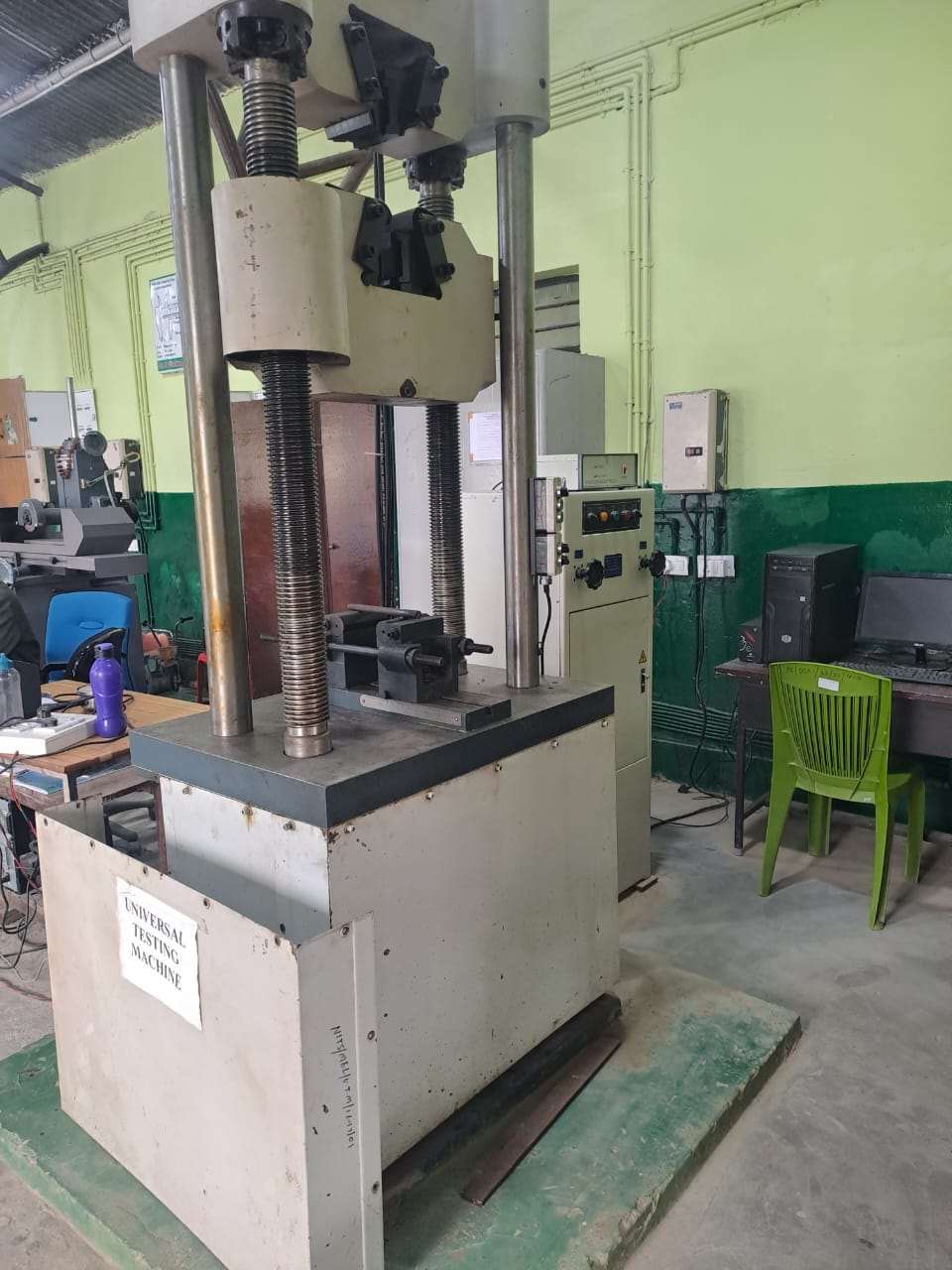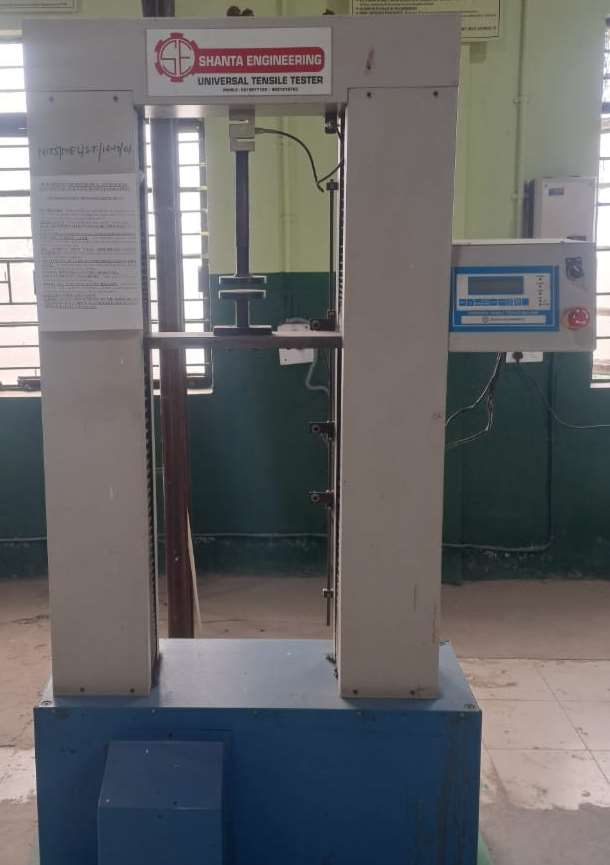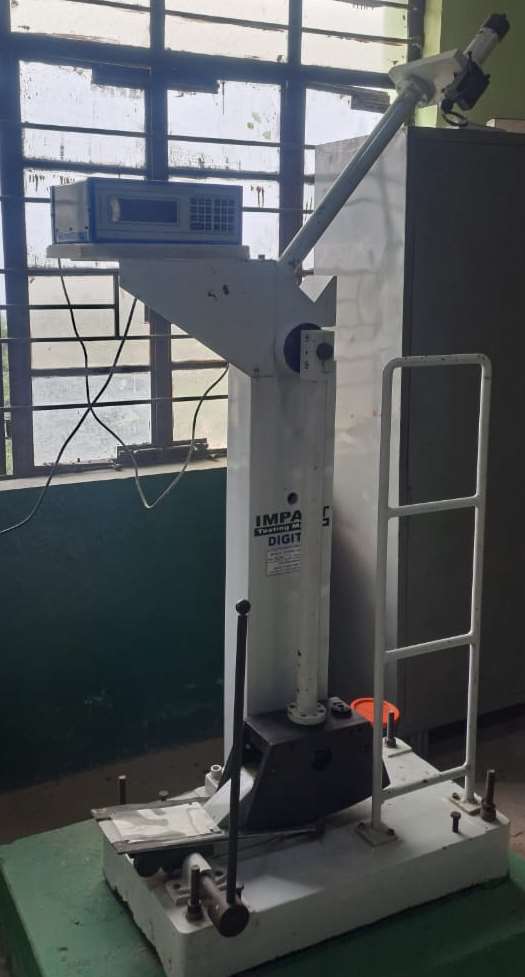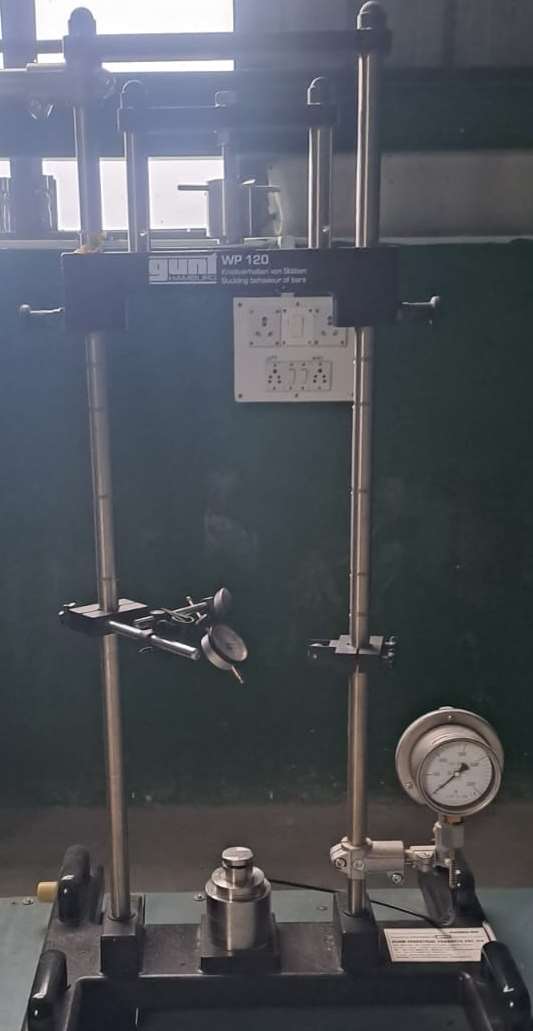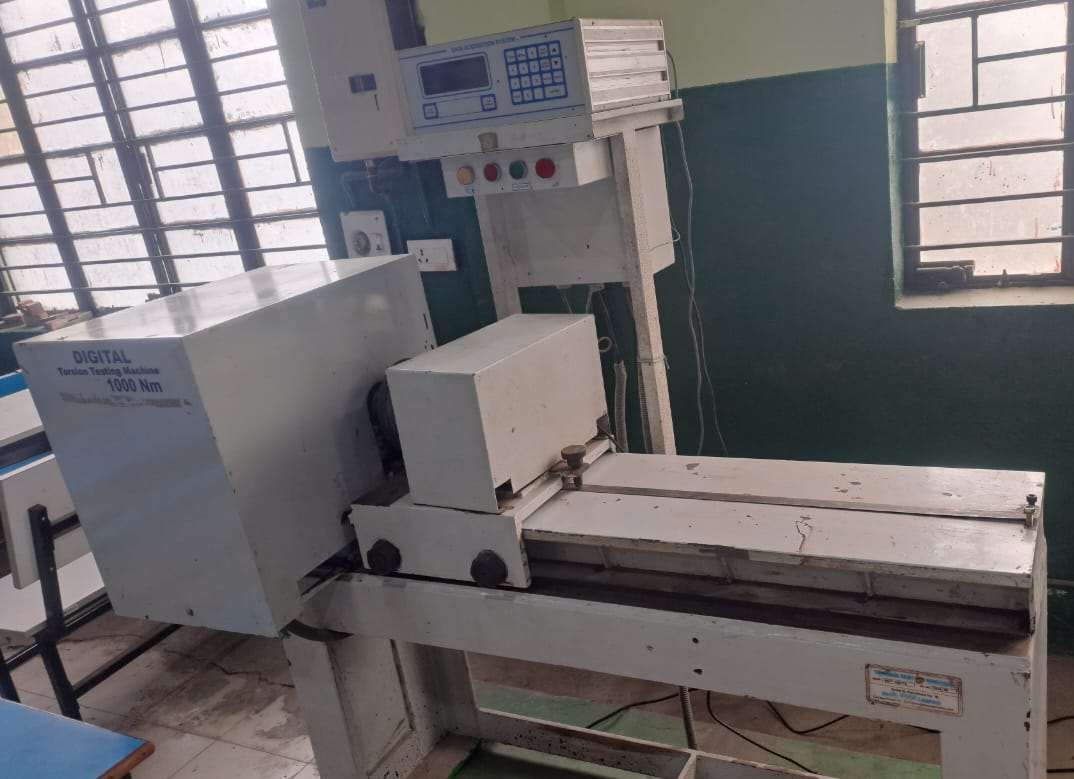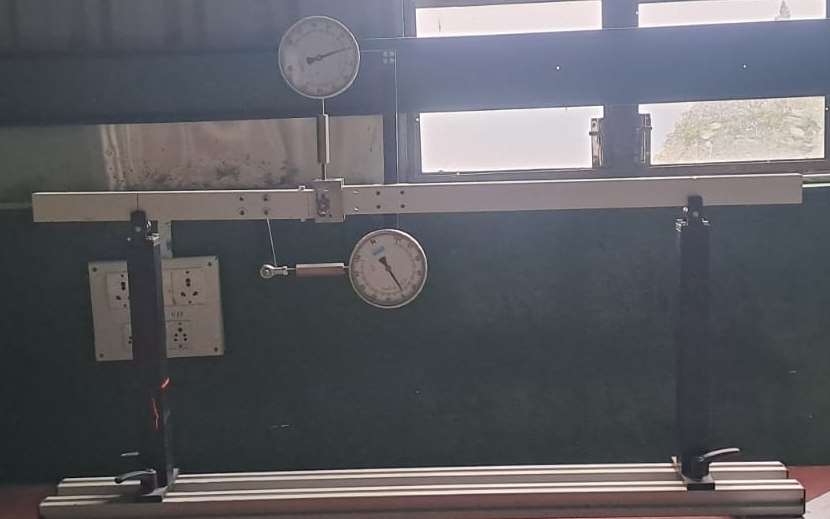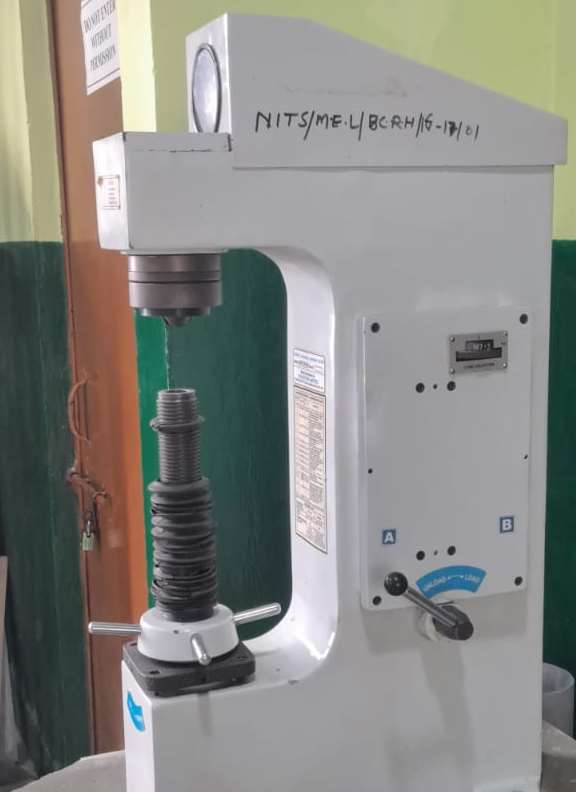Elements Of Solid Mechanics Laboratory
Lab-in-charge: Dr. Ranjan Basak
Course Objective:
In this laboratory, students will have the opportunity to apply loads to various materials under different equilibrium conditions. The student will perform tests on materials in tension, compression, torsion, bending, and impact. These conditions and/or constraints are designed to reinforce classroom theory by having the student perform required tests, analyse subsequent data, and present the results in a professionally prepared report. The machines and equipment used to determine experimental data include universal testing machines, torsion equipment, spring testing machine, compression testing machine, impact tester, hardness tester, etc. Data will be collected using Dial indicators, extensometers, strain gages and strain indicator equipment, as well as load and strain readouts on the machinery and graphing capabilities to print relevant plots for analysis. This course will advance the students' development of the following broad capabilities:
- Students will be able to understand basic concepts of stress, strain and their relations based on linear elasticity. Material behaviours due to different types of loading will be discussed.
- Students will be able to understand and know how to calculate stresses and deformation of a bar due to an axial loading under uniform and non-uniform conditions.
- Students will understand how to develop shear-moment diagrams of a beam and find the Maximum moment/shear and their locations
- Students will understand how to calculate normal and shear stresses
Course Outcome:
Upon completion of this laboratory course, students will be able to
- Analyse the behaviour of the solid bodies subjected to various types of loading
- Apply knowledge of materials and structural elements to the analysis of simple structures;
- Undertake problem identification, formulation and solution using a range of analytical methods;
- Analyse and interpret laboratory data relating to behaviour of structures and the materials they are made of, and undertake associated laboratory work individually and in teams.
- Understand the concept of tensor.
- Analyse advanced concept of stress and strain in structural problems.
- Apply the concept of different elastic functions to solve complex problems.
- Evaluate the influence of various geometric and loading parameters in plane stress and plane strain problems.
- Implement advanced concept of solid mechanics in torsion, plates and shells.
List of Experiments:
- To conduct tensile test on mild steel specimen
- To determine the shear strength of the given specimen by using universal testing machine
- To find the Modulus of Rigidity of the given test specimen
- To find the Brinell Hardness number for the given metal specimen
- To determine the Rockwell hardness number of the given specimen
- To determine impact strength of mild steel specimen by Charpy and Izod test
- To determine the stiffness of spring and modulus of Rigidity of spring wire
- To determine buckling behaviour of beams
- To determine shear force and bending moment for various loads
- To determine forces in various single plane trusses
